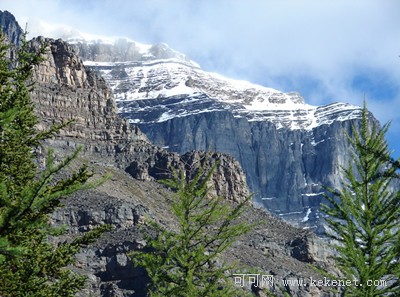昨天的石菊化石,是小編我Daisy的成果。今天,我可發現了新的大陸,那就是攀巖,這可是新開發的野外極限運動啊,你準備好了嗎?Go! Go! Go!
When the ammonites became extinct, the map of North America looked completely different: to the north, the Canadian Rocky Mountains already existed; to the south, the American Rockies had yet to rise. The date of the ammonites' extinction holds a key to when they first emerged.
These animals died about seventy million years ago in the middle of the Western Interior Seaway. And so we know at that time about seventy million years ago that this site was below sea level. So we know then that the Rocky Mountains had to rise from that seaway sometime after seventy million years ago.
Today all that is left from the ancient seafloor are these fossilized remains high in the Colorado Rockies.
Next, geologists needed to find out what pushed the seafloor up. The investigation moves to these slabs of rock flanking the Rockies just outside Denver, Colorado. They are known as the Flatirons, and they are part of the same formation that make up the Red Rocks' amphitheater. These slabs of rock are unusual because they contain holes, holes that make the Flatirons appealing to climbers and geologists alike.
So when we go climbing in the Flatirons, we are climbing on really nice handholds, in some cases, handholds that have been formed either by the pebbles in the rock or by zones of fine grained material that are easily removed by erosion the shales and the siltstones. Those layers get removed, leaving a notch for the hands to go in, and it makes for fantastic climbing.
The holes are a clue as to how these strangely tilted Flatirons were formed.
The layers themselves, the different grain sizes in the layers the silt, the sand, the pebbles this tells us that these are sedimentary rocks.
Sediments form in water when sand and small pieces of rock settle on the ground. Over millions of years they get compressed into layers of rock.
小編有約:呵呵~~看看我給大家準備的禮物。A. Denver, Colorado B. Rock C. holes
這里的線索能讓你想起什么東西來?












